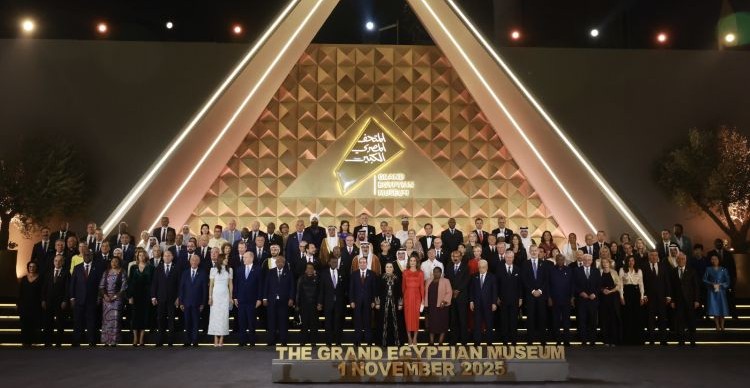Eduardo González
King Felipe VI attended the official opening of the Grand Egyptian Museum this Saturday, along with a large group of heads of state and government from around the world.
Some forty heads of state and government participated in the event, including the presidents of Djibouti, Somalia, Palestine, Portugal, Armenia, Germany, Croatia, Cyprus, Albania, Bulgaria, Colombia, Equatorial Guinea, the Democratic Republic of Congo, Ghana, and Eritrea; the prime ministers of Greece, Hungary, Belgium, the Netherlands, Kuwait, Lebanon, Luxembourg, and Uganda; and the “kings, queens, crown princes, and members of royal families of Belgium, Spain, Denmark, Jordan, Bahrain, Oman, the United Arab Emirates, Saudi Arabia, Luxembourg, Monaco, Japan, and Thailand,” according to the Egyptian Presidency.
The King, who traveled to Egypt accompanied by the Second Vice President of the Government and Minister of Labor and Social Economy, Yolanda Díaz, was received at Giza Sphinx International Airport by the Egyptian Minister of Labor, Mohamed Abdel Aziz Gibran, and the Spanish Ambassador to Cairo, Sergio Román, among other dignitaries.
The Monarch then went to the Grand Egyptian Museum, where he was received by the President of Egypt, Abdel Fattah al-Sisi, before meeting with the other heads of state and government invited to the inauguration and posing for the official photograph. Afterwards, the King, al-Sisi, and the other heads of state and government toured the Museum.
Felipe VI’s visit to Egypt comes just a month and a half after the King and Queen’s first state visit to the country, at the invitation of Abdel Fattah al-Sisi. On that occasion, the King denounced “the brutal suffering” endured by the population of the Gaza Strip and called for “a viable Palestinian state, living in peace and security alongside Israel,” while also acknowledging “the mediating role that Egypt has been playing in achieving a ceasefire agreement, the release of hostages, and the full restoration of humanitarian aid.” The Egyptian resort of Sharm El-Sheikh hosted the signing of the ceasefire between Israel and Hamas on October 13th, an event attended by Pedro Sánchez.
The “Fourth Pyramid”
Known as the “Fourth Pyramid” due to its design and proximity to the Giza necropolis, the museum will house permanent exhibitions covering an area of 85,000 square meters. The entire complex will occupy 480,000 square meters and will have the capacity to receive up to 15,000 visitors daily.
Among the highlights is a vigilant statue of Ramses II in the central hall, twelve meters tall and 3,200 years old, which has begun a new reign among the most outstanding archaeological artifacts of Pharaonic Egypt. Ramses II, the third pharaoh of the 19th Dynasty, who lived to be 87, ordered the construction of the famous rock temples of Abu Simbel to commemorate his victory at the Battle of Qadesh (1274 BC) and his own mortuary temple in Thebes, present-day Luxor.
The opening has been postponed repeatedly due to the difficulty of erecting the building in the desert—in the shadow of the Giza pyramids—and ensuring that no relics lay beneath it, a process of removing thousands of tons of sand that took ten years.
Furthermore, the inauguration has been affected by major world events of recent years. The opening was initially scheduled for 2020, but had to be postponed due to the Covid-19 pandemic. The next scheduled date was 2022, but it was delayed again because of the war between Russia and Ukraine and the ensuing economic crisis. After the outbreak of war in Gaza in October 2023, the government moved the opening to July of this year, but it was postponed once more following Israel’s attack on Iran the previous month.
